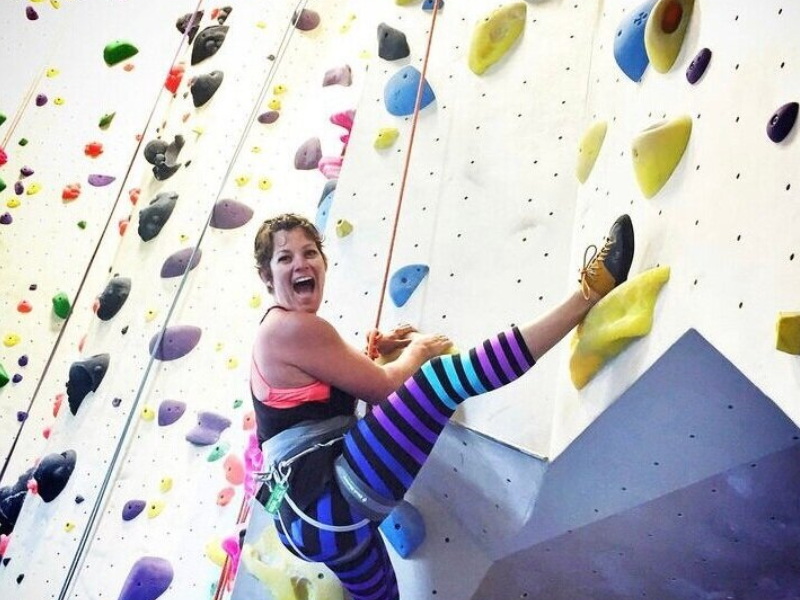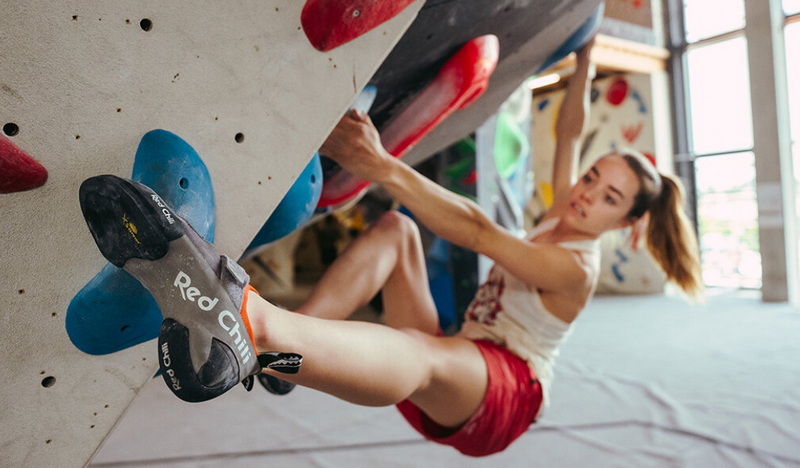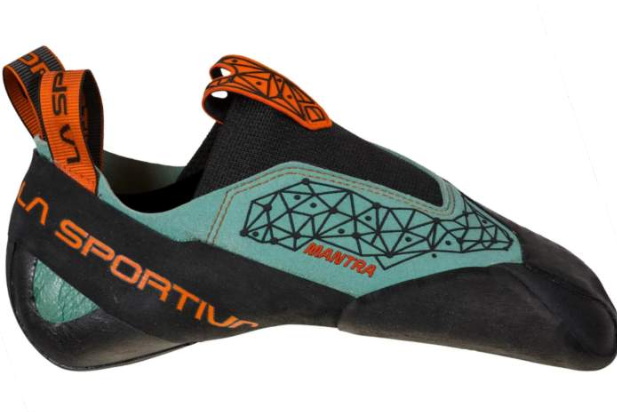Content Menu
● Understanding Climbing Shoes
>> Types of Climbing Shoes
>> Key Differences Between Men's and Women's Climbing Shoes
● Can Women Wear Men's Climbing Shoes?
>> Fit and Comfort
>> Performance Considerations
>> Personal Preference
● Innovations in Climbing Shoe Technology
>> Sustainability in Climbing Shoe Manufacturing
● How to Choose the Right Climbing Shoes
>> 1. Determine Your Climbing Style
>> 2. Try Before You Buy
>> 3. Pay Attention to Materials
>> 4. Consider Your Budget
>> 5. Seek Expert Advice
● Testing Climbing Shoes in Real Conditions
● Conclusion
● FAQ
>> 1. Are men's climbing shoes suitable for all women?
>> 2. What should I look for when trying on men's climbing shoes?
>> 3. Do men's climbing shoes perform differently than women's?
>> 4. Can I use my regular shoe size as a reference when buying men's climbing shoes?
>> 5. Should I always choose gender-specific models when buying climbing shoes?
Climbing is a sport that requires not only physical strength and endurance but also the right gear to ensure safety and performance. One of the most crucial pieces of equipment for climbers is their climbing shoes. While there are specific models designed for women, many female climbers wonder if they can wear men's climbing shoes. This article will explore the differences between men's and women's climbing shoes, the considerations for women wearing men's shoes, and provide guidance on how to choose the right climbing shoes for your needs.

Understanding Climbing Shoes
Climbing shoes are specialized footwear that provides the necessary grip and support for climbing activities. They are designed to fit snugly, allowing climbers to feel the rock surface beneath their feet. The right fit can significantly enhance performance, making it essential to choose the correct size and style.
Types of Climbing Shoes
Before diving into whether women can wear men's climbing shoes, it's essential to understand the types of climbing shoes available:
- Neutral Shoes: These are comfortable and suitable for beginners or multi-pitch climbs.
- Moderate Shoes: These provide a balance between comfort and performance, ideal for sport climbing.
- Aggressive Shoes: Designed for advanced climbers, these shoes have a downturned shape for precision on small footholds.
Key Differences Between Men's and Women's Climbing Shoes
Men's and women's climbing shoes differ in several ways:
- Sizing: Women's shoes typically have a narrower fit in the heel and forefoot to accommodate women's foot shapes.
- Volume: Women's shoes often have lower volume designs, making them more suitable for women with smaller feet.
- Materials: While both men's and women's shoes use similar materials, women's models may feature different color schemes or styles.
Can Women Wear Men's Climbing Shoes?
Yes, women can wear men's climbing shoes, but there are several factors to consider:
Fit and Comfort
The most critical aspect of any climbing shoe is fit. Women should try on men's shoes to see if they provide an adequate fit. Here are some tips:
- Try Different Sizes: Women's shoe sizes typically range from 1.5 to 2 sizes smaller than men's. If a woman wears a size 8 in women's shoes, she might need a size 6 or 6.5 in men's.
- Check Width: Men's shoes tend to be wider; if you have narrow feet, you may find that men's shoes do not fit well.
- Consider Foot Shape: If your foot shape aligns more closely with a men's shoe design (e.g., wider forefoot), then wearing men's climbing shoes could be beneficial.
Performance Considerations
Men's climbing shoes may offer different performance characteristics compared to women's models. Some factors include:
- Stiffness: Men's models may be stiffer or have different rubber compounds that affect grip.
- Downturn: Aggressive men's models may have a more pronounced downturn which can help with precision but may not be comfortable for all climbers.
Personal Preference
Ultimately, personal preference plays a significant role in whether women choose to wear men's climbing shoes. Some women prefer the fit and feel of men's models due to their specific foot shape or climbing style.
Innovations in Climbing Shoe Technology
The climbing shoe market has seen significant advancements in recent years, leading to improved performance and comfort. Innovations include:
- Advanced Rubber Compounds: New formulations enhance grip, flexibility, and durability, essential for challenging climbs. Brands are developing rubber soles that provide superior friction on various surfaces.
- Breathable Materials: Modern climbing shoes feature breathable fabrics that reduce moisture build-up during climbs, enhancing overall foot health.
- Adjustable Closures: Many brands now offer adjustable closures like Velcro straps or quick-lace systems that allow climbers to customize their fit easily.
- Smart Technology: Some manufacturers are integrating smart technology into their designs, allowing climbers to monitor performance metrics such as grip strength and foot positioning through sensors embedded in the shoe.
Sustainability in Climbing Shoe Manufacturing
With an increasing focus on environmental responsibility, many brands are adopting eco-friendly materials and sustainable production practices. This trend aligns with consumer preferences for environmentally conscious products and helps reduce the overall impact of manufacturing processes on the planet.

How to Choose the Right Climbing Shoes
When selecting climbing shoes, consider the following factors:
1. Determine Your Climbing Style
Your climbing style will dictate what type of shoe you need:
- If you're bouldering or sport climbing, an aggressive shoe might be best.
- For trad climbing or long routes, consider a neutral or moderate shoe for comfort.
2. Try Before You Buy
Always try on multiple pairs before making a decision:
- Walk around in them; they should feel snug but not painfully tight.
- Test them on different surfaces if possible.
3. Pay Attention to Materials
Different materials can affect comfort and performance:
- Leather stretches over time; synthetic materials tend to maintain their shape better.
4. Consider Your Budget
Climbing shoes come in various price ranges; determine your budget beforehand but remember that investing in quality footwear is crucial for safety and performance.
5. Seek Expert Advice
Consult with staff at your local climbing shop; they can provide valuable insights based on your specific needs.
Testing Climbing Shoes in Real Conditions
When selecting climbing shoes, it's beneficial to test them under real-world conditions. Many climbers recommend trying out different types of rock surfaces and routes before making a purchase decision. This hands-on approach allows you to gauge how well each shoe performs based on your unique preferences and requirements.
For example:
- Vertical Routes: If you primarily climb vertical routes, look for shoes that excel at edging and provide good support without sacrificing sensitivity.
- Overhangs: For overhanging climbs, consider aggressive models that offer maximum power transfer through the toe box while still being comfortable enough for extended wear.
Conclusion
Women can certainly wear men's climbing shoes if they find a suitable fit that meets their performance needs. The key is to prioritize comfort and functionality over gender-specific labeling when it comes to choosing footwear for such an active sport. With advancements in technology and materials, climbers now have access to a wider range of options than ever before.
Ultimately, whether choosing men's or women's models, finding the right pair of climbing shoes can significantly enhance your performance on the rock while enjoying the sport you love.

FAQ
1. Are men's climbing shoes suitable for all women?
Men's climbing shoes can be suitable for women depending on foot shape and size. It's essential to try them on and ensure they fit well.
2. What should I look for when trying on men's climbing shoes?
Focus on fit, comfort, stiffness, and how they feel when standing on small footholds.
3. Do men's climbing shoes perform differently than women's?
Yes, men's shoes may have different stiffness levels and rubber compounds which could affect grip and performance based on individual preferences.
4. Can I use my regular shoe size as a reference when buying men's climbing shoes?
No, typically women's sizes are about 1.5 to 2 sizes smaller than men's sizes; it's best to try them on rather than rely solely on regular shoe size.
5. Should I always choose gender-specific models when buying climbing shoes?
Not necessarily; focus more on fit and comfort rather than gender specifications. Many climbers find success in wearing models designed for the opposite gender if they suit their foot shape better.

















